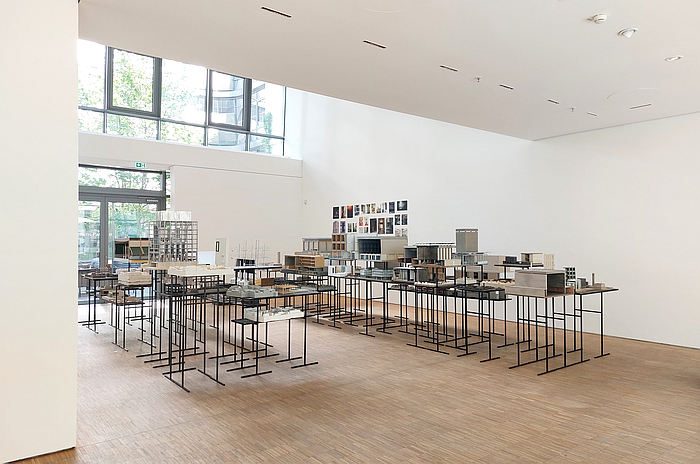
In a world in which architecture is often corporate, egotistic and (one could be mistaken for thinking, more) about the vision of a particular architect (than actual needs), one can forget that not only the origins of architecture as an art and as the practical framing of space beyond the trade of construction, are, arguably, to be found in religious houses, but also that some of the most important and influential European architects of more recent (hi)story, architects who often worked on cathedrals of a more secular nature, also worked in and on sacral architecture, including, for example, and amongst many others, an Egon Eiermann, a Le Corbusier, a Marcel Breuer or a Gio Ponti.
A sacral architecture that not only has a special place in the (hi)story of architecture, but a special relationship with the communities and societies in which it exists; are buildings that are much more than a physical structure, whose myriad functions are tangibly and intangibly layered, and which bequeaths sacral architecture an array of baggage and associations that are difficult to ignore.
Which can make finding novel uses for a church building that is no longer needed as a church difficult.
And across Europe ever more churches are in need of a novel use.
What to do? How does one transform a sacred building to a secular building? What meaningful, responsible, durable novel use, purpose, can be developed for a building not only developed for a very specific, singular purpose but that radiates that purpose?
Such and similar questions were at the core of the brief set to students on the Masters project Resource, Research, Reset at the Technische Universität München, TUM, under the supervision of Professor Uta Graff. Specifically a brief to develop a novel use for the St. Johanneskirche in Ingolstadt, a brutalistic early 1960s monolith, and for St. Mauritius in Munich-Moosach, a brutalistic late 1960s composition, the later with the specification that the church should be transformed into accommodation.
The results of the students deliberations being presented during Munich Creative Business Week, MCBW, 2025 in the showcase Resource, Research, Reset - Transformation of Sacred Spaces in the DG Kunstraum Diskurs Gegenwart.
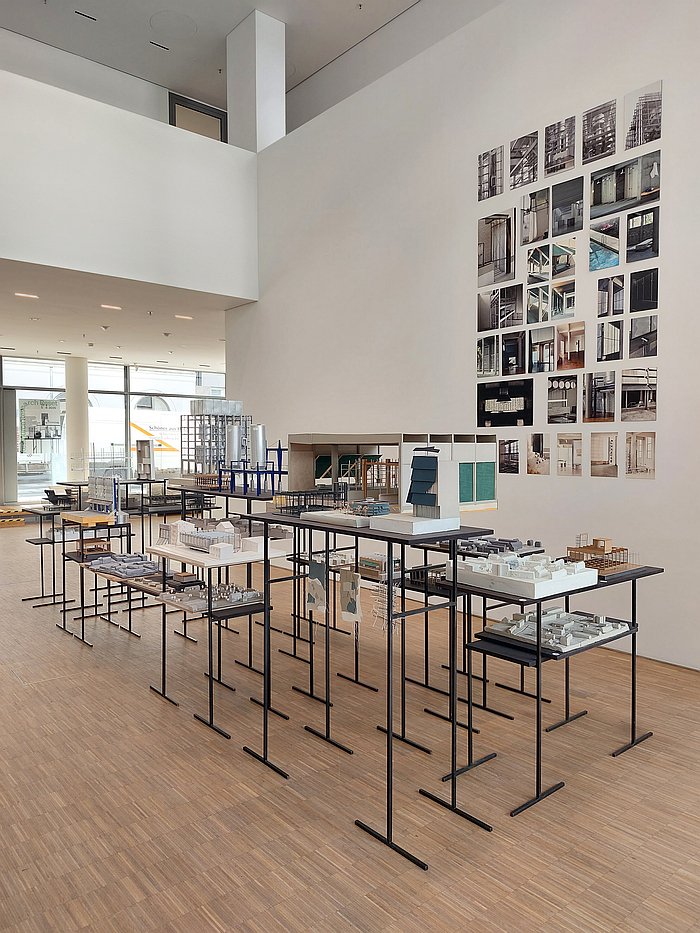
A presentation that, as ever with presentations of student projects, isn't, wasn't, primarily about what the students proposed, but rather about how they approached the brief, why the made the decisions they made, what they learned from the project, the process, how developing and fine-tuning their proposal affected, informed, altered, their approaches to architecture and their positions on architects, architecture, society et al. Student projects start and end with the student.
Which, again, as ever, doesn't mean that the projects can't be interesting and informative for the neutral viewer. Indeed an argument can be made that a successful student project is one where not only the students benefit, but where a presentation of the results stimulates the neutral viewer. Not all do.
Resource, Research, Reset did and does, and also offers several interesting paths down which to wander, not least the many projects that reflected, whether deliberately or not, we no know, but they did, on aspects that are very much at the centre of both the roles churches traditionally serve and of Christianity, albeit in slightly, occasionally very, different contexts.
Juri Nitz and Philip Schene's proposal, for example, to transform St. Mauritius into an emergency accommodation centre very much reflecting the charity of Christianity; Christina Arnold and Luisa Huber's placing of a massive fireplace within St. Mauritius by way of creating a communal space around that fire, being very much in sense of a coming together, and also light as comfort and fire as purifying force; while Paul Hübner and Robin Rüger's Tanzhaus, House of Dance, project for St. Mauritius, reminds that there are a great many ways to celebrate the Christian faith. And our togetherness. Lest we forget a Frank Turner's Four Simple Words: I want to dance. Don't we all. Ideally with others.
Whereby with the latter two projects the accommodation aspect of the brief wasn't instantly recognisable; which isn't a complaint, far from it, we're all for students ignoring the finer details of a project brief. There will be time enough once they've graduated to suppress their creativity to appease a client or a boss. More normally a boss in architecture. As a student have fun with the brief. Lots of fun.
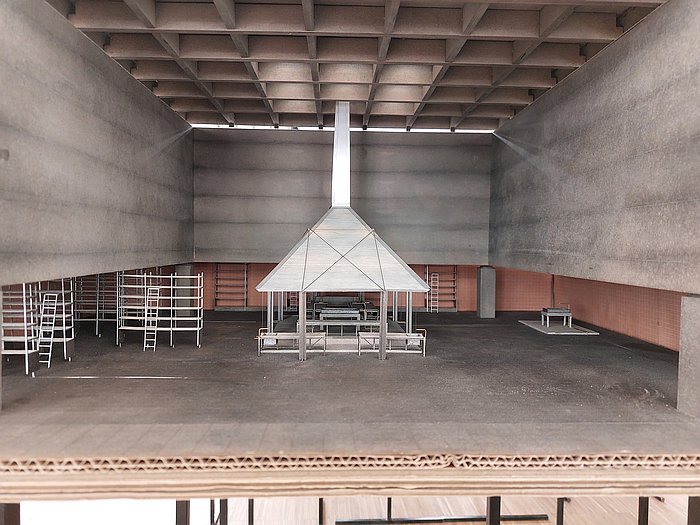
Fun that was, arguably, much more present in the proposals for Ingolstadt's St. Johanneskirche, including in Phillip Dopfer's proposal for turning the church into a laundry, we're presuming a public laundry, with cross-esque formations inviting you to hang your freshly laundered robes to dry, thus not only a very nice play with the ritual washings of Christianity but also as a communal laundry a place to bring people together without any compulsions, or expectations, therefore, potentially aiding and abetting the cohesion in the community. And which also reminds of the communal laundries, and communal dining rooms, that were often a feature of Functionalist Modernist housing estates of the 1920s and 30s, one of the many aspects of the architecture and design of the 1920s and 30s, one of the possible viable legacies of the architecture and design of the 1920s and 30s, that tends to gets lost in our simplified objectification of the period.
Or Lena Keßler and Luca Maisch's employing the space within the St. Johanneskirche to site a basketball court: and what are the arenas of the NBA if not temples to Gods, places of worship and communion? A re-interpreting of the rituals and artefacts of the Christian faith for an increasingly secular 21st century also very present, and very satisfying, in Christian Arnold and Johanna Illig's Brothalle, a bakery, and we presume cafe, and thus an endlessly joyous coupling of that bread which in the Christian Eucharist is celebrated as the body of Christ and that bread which in contemporary secular society is celebrated on social media as bread, as a bread above all others, when it comes from some expensively, slickly, hyped business in a recently gentrified suburb of a city: a symbolism replaced by an objectification, meaning replaced by hollowness, the universal replaced by the individual, bread celebrated as a good rather than as good. A comparison to pick up, run with and see where it takes you. We imagine you could get a sermon out of it.
Bread that in the Eucharist is intimately related with wine, and while viewing Pauline Ludwig and Katrin Scheyer's proposal for reworking the St. Johanneskirche as a water treatment plant we couldn't help thinking, wouldn't it be cool if the plant didn't just treat water but in doing so turned that water into wine... but then decided we'd more than happily make do with the beer from Louis Ostermayer and Leonard Weber's brewery proposal. Whereby there was no indication as to if to their beer was to be produced by top fermentation, bottom fermentation or divine intervention.
Thus a collection of projects that in elucidating that just because a church goes doesn't mean that which it stood for has to go, in approaching, if one so will, a position that much as the human body is but a housing for the soul, so to is the physical church not to be confused for that which enlivens it, gives it its vitality, both the soul of the human and the soul of a church transcend the physical, is not just a presentation about the transformation of a sacred building into a secular building, but also, or very often, about the transformation of the allegorical of the church into the physical of society. And thereby allowing for more nuanced reflections on Christianity, religion in general, and its associations, intersections, with secular society than are enabled, possible, when in the presence of the objects and rituals and texts of Christianity, of religion. Or when in a church as a church.
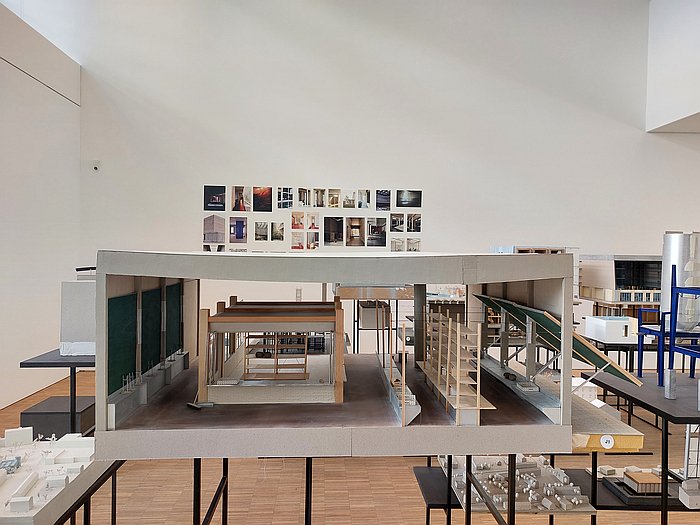
In addition Resource, Research, Reset helps and helped focus attention on the recycling of buildings, that subject that is and was very much at the centre of exhibitions/projects such as, for example, and amongst others, Demolition Question at the Deutsches Architektur Zentrum, DAZ, Berlin, or Transform at S AM Swiss Architecture Museum, Basel, and the inherent questions therein, increasingly urgent inherent questions therein, of not only the resources employed in a policy of Remove. Rebuild. Repeat, and the associated ecological and economic impacts, but also the social impacts demolition and rebuilding projects invariably bring with them.
A Mart Stam once argued that "a building, built today as a bank, should be able to be used tomorrow as an office building, department store or hotel"1, and while there can be very little argument against that position, unless that is you're a big name architect with expensive, egoistic visions you needs must realise, or are Donald Trump, unless an existing building is built as such, there tends to be a conventional belief that the moment is lost. That the building cannot be transformed. That its use is fixed. That demolish and rebuild is the only viable option.
Churches with their very specific spatial and functional demands, the need to develop them internally in a manner almost as closely regulated as the celebrations that occur in those spaces, and to develop them externally so that they are identifiable as a church, all components of the baggage and associations churches carry with and within them — if admittedly the churches featured in Resource, Research, Reset aren't typical of the genre — make churches not only very singular in the world of architecture, but also extreme examples of a building that apparently can't be transformed à la Mart Stam. Churches are built for the eternity of Christ, not the transience of human society.
Yet as Resource, Research, Reset elegantly and convincingly argues, that transformation process is possible. And almost limitless in its expressions. As Resource, Research, Reset elegantly and convincingly argues 'a building, built yesterday as a church, can be used today as emergency accommodation, a bakery or a water treatment plant. And also as an office building, department store or hotel'.
And if buildings as constructionally complicated, as culturally complicated and as connotatively complicated as churches can be transformed there is no real reason that secular buildings without those complications can't be. We just have to want to. Understand why that makes sense. Ignore the selfish storytelling of architecture.
And be able to.
Which brings us, unavoidably, to the protected building status a great many church buildings find themselves under; a subject for another day, but an important consideration in how we approach the built environment in our contemporary realities. One where, again, churches offer access to a differentiated perspective: the baggage and associations sacred architecture brings with it mean that protected building status is often seen as natural law, something churches should enjoy, protection via the mortal authorities as much as from the divine. However, if a church building isn't needed as a church why shouldn't it be structurally transformed to enable it to be something else? Why does it have to maintain its form and layout when they are no longer required? And then transpose that question to any given building, from any epoch, by any architect. If the need for the building has changed, why shouldn't the building? What is the purpose of protected building status and is it in its current form fit for that purpose?
Thus a presentation that through the way it enables church buildings to initiate paths of questioning also tends to an argument that for all churches are one of the oldest examples of architecture as a practice distinct from construction, one of the oldest components of urban planning concepts, and institutions that have ever fewer active users, church buildings still have a lot to contribute to debates on architecture, urban planning and society.
Resource, Research, Reset - Transformation of Sacred Spaces is scheduled to run at DG Kunstraum Diskurs Gegenwart, Finkenstraße 4, 80333 Munich until Thursday June 5th. Further details can be found at www.dg-kunstraum.de
Munich Business Week 2025 has now ended. Details on what you missed, and on the event in general, can be found at www.mcbw.de
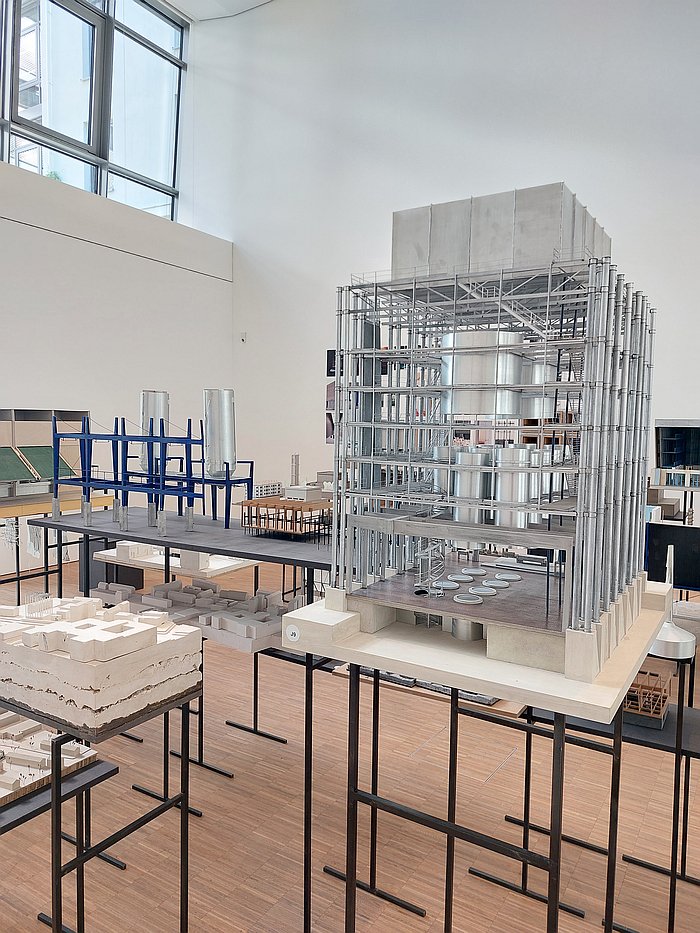
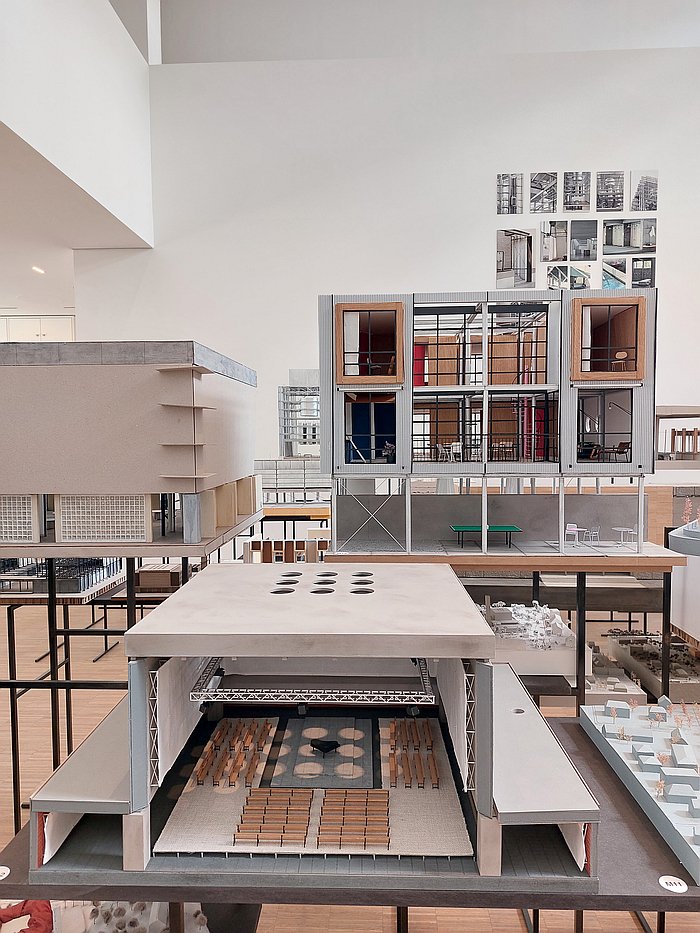
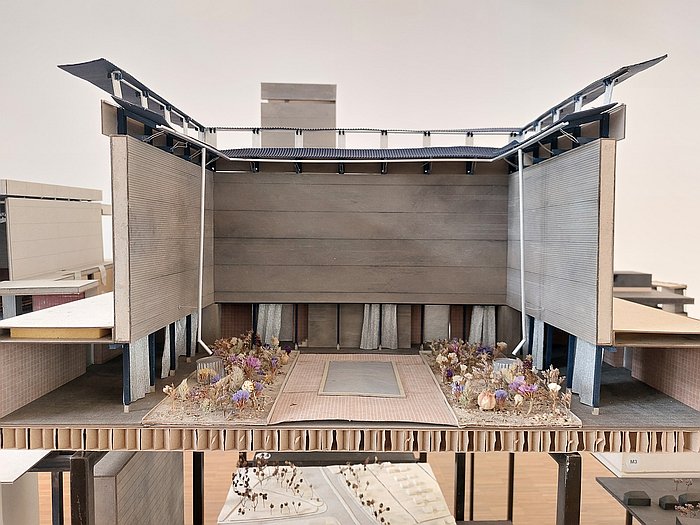
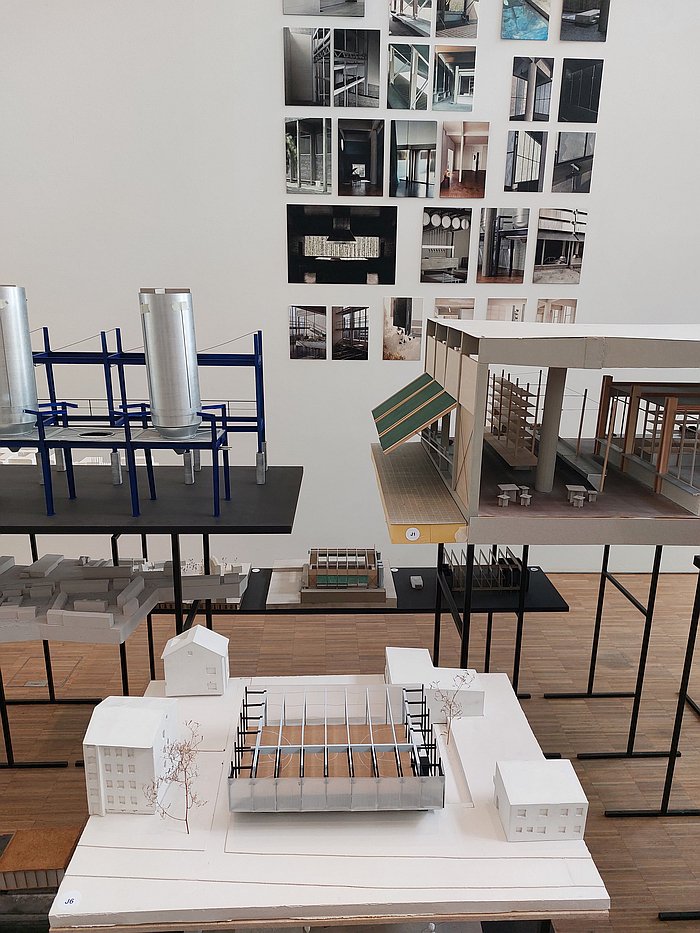
1Mart Stam, M-Kunst, i10 International Revue, 1/2 1927